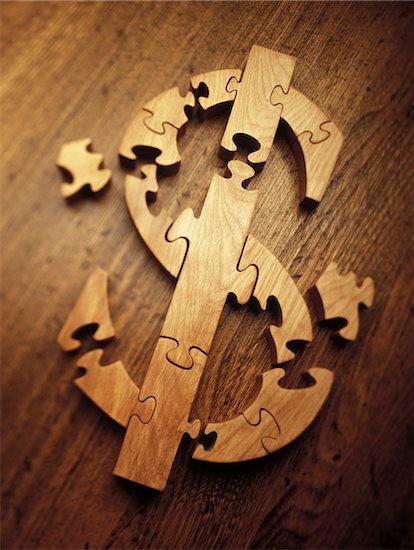 March 10, 2025
March 10, 2025
What You Need to Know Today:
Market is still looking for 2 rate cuts in 2025, CNBC survey says
We won’t get another update on the probable trajectory of Federal Reserve interest rate policy until the central bank updates its Dot Plot projections at its March 19 meeting. But meanwhile, we have a survey from CNBC that shows a majority of respondents–and this is a small sample of hust 25–still believe we’ll get two interest rate cuts from the Fed in 2025. But that faith in that two-cut scenario is fading.

Consumer debt soared in October–are consumers trying to beat the Trump tariffs?
U.S. consumer credit rose by $19.2 billion in October, smashing through the $10.1 billion consensus forecast. And surging from $3.2 billion in September, according to Federal Reserve data released Friday. One in three Americans are stockpiling daily necessities like toilet paper and non-perishable food out of fear that President-elect Donald Trump’s pledge to add tariffs to imported goods will lead to higher prices, according to a new survey by CreditCards.com

Saturday Night Quarterback says (on a Sunday), For the week ahead expect…
All eyes will be on the Consumer Price Index inflation report for November due out on the morning of Wednesday, December 11. It’s the last big inflation data dump before the Federal Reserve meets on December 18.

U.S. electricity demand set to soar–this is a very big deal
U.S. electricity demand could rise by128 gigawatts over the next five years, driven by data centers and manufacturing growth primarily in six regions of the country, according to a report published Thursday by Grid Strategies. That result is a five-fold increase in electric demand load forecasts from estimates just two years ago.

Jobs report locks in one more rate cut from the Fed
The U.S. economy added 227,000 jobs last month, the Labor Department reported Friday morning, December 6. In addition, revisions added 56,000 jobs to the totals for October and September. Which adds up to a strong recovery from the shocking low 12,000 new jobs initially reported for October. Initial analysis that the almost non-existant growth for October was due to hurricanes and strikes now looks correct. At the same time, the unemployment rate, which is calculated in a survey separate from that which produces the jobs total, ticked up to 4.2% from 4.1%. The jobs total and the unemployment rate were broadly expected by economists. The complete picture is of an economy showing a continued modest expansion. In my opinion, that’s enough to lead to a 25 basis point cut at its December 18 meeting in the Federal Reserve’s benchmark short-term interest rate from the current range of 4.50% to 4.75%. The CME FedWatch took today put the odds od a 25 basis point cut at the December meeting at 85.1%. That’s up from 66% odds a week ago

Watch my new YouTube video: What if the economic consensus on tariffs is wrong?
Today’s video is What if the economic consensus on tariffs is wrong? It would be really bad news for stocks. The current consensus among economists is that tariffs will be inflationary as companies pass on rising prices to consumers. However, as Nir Kaissar recently wrote in an opinion piece for Bloomberg, this may not be correct. He used McDonald’s as an example. In February, McDonald’s CEO Chris Kempczinski said that the fast food restaurant has been losing low-income customers–houseold income of $45,000 or less– as the cost of its meals has risen. The price of a Big Mac, for example, has risen 25% since 2019, even though the price of raw materials has not risen at that rate. The operating margin at the company gone up and Wall Street expects that to continue, even as the company has lost customers. The company announced that they’d be offering a new, low price menu in an effort to retain a larger low-income consumer base. If more companies go in the direction of cutting costs to retain customers rather than passing on the cost of tariffs to consumers, Wall Street will be in for a big, unwelcome surprise in earnings since the current analyst consensus looks for operating margins to continue to climb in 2025 and 2026. 2025 is sure to come with volatility and uncertainty until we have a better idea of how high and far reaching the tariffs will be, and how companies will respond to them.

Special Report: It’s a new world for dividend income investors: 3 trends (all now posted) and 10 picks (all first now posted PFE, BEPC, NKE, EQNR, V, HON, T, VZ, RTX, ABBV)
Let’s say you’re a dividend income investor. You need cash income in retirement. Or you want your portfolio to generate cash now so you can invest in new opportunities. Or you just want the extra safety and lower risk that owning a stock with a substantial dividend can bring. Whatever your reasons–and I can think of a lot more–this is a particularly challenging financial market for dividend income investors.But I do think there are strategies dividend income investors can successfully pursue even in this challenging market. In the rest of this Special Report I’m going to explain the three ways I think you should be thinking about dividend income investing in this market. And then I’m going to give you 10 dividend stocks that I think are especially well-suited to producing income (and price appreciation, which is always nice even if you’re an income investor) in this market environment. First pick just posted–Pfizer
Live Market Report (20 minute delay)

Visa beats but falls on guidance–that’s what “priced for perfection” means
After the close yesterday, Visa (V) reported earnings of $2.41 a share (after adjusting for one-time items) for the December 2023 quarter. (That the company’s fiscal first quarter.) Analysts had been looking for $2.34 a share in adjusted earnings. Revenue grew 8.8% to $8.63 billion, again beating analyst forecasts for $8.55 billion in revenue. Visa said payments volume grew 8%, and that its processed transactions rose 9% in the period. And yet the stock was down $4.70 a share, or 1.72%, to $267.91 at the close today, Friday, January 26. Why?
Special Report: My 10 Picks for how to invest in climate change NOW–3 first 3 picks, LAZR, PLBF and GWH
Here’s how I characterize developments in the global climate crisis in 2023: It was the year when hot air confronted cold cash. And as you might expect cold cash won.
Which gives me the framework for how to invest in the global climate crisis over the next 12 to 24 months. I’m going to use natural gas to develop my investing paradigm. And then I’m going to give you four sectors in which to concentrate your investments. And 10 specific picks for your money. I expect that I’ll be revisiting the topic of how to invest in the global climate crisis again before too long–because I think today’s paradigm will need substantial revision not all that far down the road.
In Part 1 today, I’m going to develop that paradigm. In Part 2 I’m going to tell you why I think nuclear energy, utility scale battery storage, wind and solar are the sectors that deserve your investment cash and attention (and why electric vehicles don’t make the cut now.) In Part 3, I’ll give you the ten stocks and ETFs I’d pick for these four sectors.

Please watch my new YouTube video: Too Far, Too Fast
Today’s video is Too Far, Too Fast. Yesterday, on January 24, the market hit Wall Street’s consensus 2024 target for the end of 2024. Yep, a bit early. The consensus target for the end of the year 2024 close is an average of 4867 and yesterday the S&P closed at 4868. The median target is 4950, and the high end forecast is around 5200–only 350 points from where we are. We’re still awaiting confirmation that the Fed will cut rates and when that happens (likely in June or July–not March), more money will come into the market. This mid-year injection of money is good, but how much of a reward is there in a market that may have already reached its target for 11 months from now? At this point, investors are chasing momentum in an attempt to make up for missing the mark in 2023. That leaves the market risky at the moment. There’s not a whole lot of reward in a market that moves sideways with very few big moves on the up side. We may very well finish the year flat from these levels.

U.S. GDP rose at a stronger than expected 3.3% rate in the fourth quarter
U.S. Gross Domestic Product (GDP) grew at an annual 3.3% rate in the fourth quarter, the Commerce Department announced today. That was down from the 4.9% annual growth rate in the third quarter, but substantially above the 2.0% rate expected by economists. For the full year, the US.economy expend at a 3.1% rate.

ASML–and chip stocks in general–soar on equipment-maker’s big growth numbers
Shares of ASML Holding (ASML) closed up 8.85% today after the company reported record orders for its chip-making equipment in the fourth quarter. ASML sales grew 12.5% year-over-year. And orders more than tripled from the third-quarter. I added shares of ASML Holding to my long-term 50 Stocks Portfolio on December 12, 2023. The position is up 17.6% since then as of the close on January 24.

Tesla misses on earnings but that’s not the worst news in today’s report
Today, after the market close, Tesla (TSLA) reported fourth-quarter earnings of 71 cents a share. The missed the consensus Wall Street forecast of 73 cents. Sales of $25.2 billion missed forecasts for $25.6 billion. But I’d argue that the earnings and sales misses weren’t the worst news in the report.

3M plunges as company delivers exactly the kind of bad earnings news investors fear
3M (MMM) fell 11.03% today, Tuesday, January 23, the most in nearly five years, after announcing projections for 2024 sales and earnings below Wall Street expectations. Now granted that 3M is a special case–the company is engaged in a huge restructuring effort that has met with a high degree of investor skepticism. In short, investors doubt that the company can pull it off without cutting its dividend. So the stock is especially sensitive to any news that suggest that the restructuring is failing. But the stock’s big drop today is also an indication of how worried this market, trading at record highs, is about the possibility that earnings growth for the fourth quarter, the subject of the current earnings season, won’t support prices at these levels.

Xi’s plan for stimulus and stock market boost fails to convince China traders
China will launch a new stabilization package including about 2 trillion yuan ($278 billion) to buy mainland shares via offshore trading links in the coming days, government sources say. This would come after a market rout that has erased more than $6 trillion in market value from mainland China and Hong Kong stocks since a peak reached in 2021. And certainly China’s stocks rallied on the news. The NASDAQ Golden Dragon Index of Chinese stocks traded in the United States closed up 4.84% today, Tuesday, January 23. But considering the extent of the losses and its duration, I’d count a less than 5% gain–especially since the index was up by more than 6% earlier in the day.
Please watch my new YouTube video: Trend of the Week Auto Semiconductors
Today's Trend of the Week is Auto Semiconductors. One of the biggest trends coming out of the Consumer Electronics Show this year was new technology for automobiles, including chips for automatic driving, entertainment, and advanced AI. Advanced Micro Devices (AMD)...

More fuel for this rally in Friday’s consumer sentiment news
On Friday the University of Michigan’s consumer sentiment index reported a rise of 9.1 points, the biggest monthly advance since 2005, to 78.8. The preliminary January reading stands at the highest level since July 2021. Consumer sentiment jumped 13% in January to its highest level since mid-2021. Since November, consumer sentiment has risen 29%, marking the largest two-month increase in more than 30 years. And that was just the top line in a report with lots of good news for stocks and the current rally.

Please watch my new YouTube video: Quick Pick Merck
Today’s stock pick of the week is Merck, (MRK). Merck’s “problem” is that one of its biggest revenue streams comes from Keytruda, an oncology drug that will be going off-patent in 2028. In 2023, Merck projected new oncology drugs would bring in an additional $10 billion to replace Keytruda’s revenue. At this year’s JPMorgan healthcare conference, the company’s projection was even higher at $20 billion by the 2030s.

Will the Magnificent Seven stocks let the market down?
The Magnificent Seven stocks accounted for virtually all of 2023’s 24% stock market gain. The Magnificent Seven stocks are Alphabet (GOOG), Amazon (AMZN), Apple (AAPL), Meta Platforms (META), Microsoft (MSFT), Nvidia (NVDA), and Tesla (TSLA). And according to Wall Street analysts these stocks are set to do it again when they report fourth quarter earnings beginning this week (on Wednesday, Jonuary 24, with Tesla and continuing into the following week.The Magnificent Seven are expected to deliver combined earnings growth of about 46%, according to data from Bloomberg. That’s down slightly from the third quarter’s 53% expansion, but it still dwarfs almost all of the main sectors in the S&P 500 Index. It’s not surprising, therefore, that the long Magnificent Seven (and other tech stocks) is the most common trade in the current market. Nor that the options market is pricing in “virtually no risk” for mega-cap stocks, Brian Donlin, head of equity derivatives strategy at Stifel Nicolaus, told Bloomberg. All of which makes the recent weakness in some of the Mgnificent Seven stocks a bit worrying. Apple and Tesla are most likely to deliver disappointing numbers.

Saturday Night Quarterback says, For the week ahead expect…
On Thursday, the Bureau of Economic Analysis will deliver the initial reading on fourth quarter GDP. Economists project that the report will show the economy grew at an annualized 2% rate. That would be down from the 4.9% in the third quarter (however, no one expected a repeat of the annual rate) but together the two quarters would be the strongest back-to-back quarters for growth since 2021. A day later the Federal Reserve’s favorite inflation gage, the Personal Consumption Expenditures index, is expected to show a continued decline in inflation to annualized rate of 3% in December. This would be an 11th straight month of declining inflation.

China’s stocks set another kind of record (to the downside)
In a week where the U.S. Standard & Poor’s 500 and NASDAQ Composite and NASDAQ 100 set new record highs, China’s stock market turned in another big move to the downside. The Hang Seng China Enterprises Index has already lost 11% in 2024. That comes after a record four-year losing streak and the slump this year has just reinforced the opinion among money managers that “China is uninvestable now.” The Nasdaq Golden Dragon China Index slipped was down by as much as 2.2% at the start of US trading Friday, extending losses to a fifth consecutive day. The grim milestones keep accumulating.

Taiwan Semiconductor results set the chip sector on fire
Shares in Taiwan Semiconductor Manufacturing (TSM) were up almost 10% yesterday after the company announced an unexpectedly strong return to growth. That has in turn pushed chip stocks higher across the sector. For example, shares of Advanced Micro Devices (AMD), which were already moving higher this week ahead of the news, hit a new record high today. The good news from semiconductor companies and the moves on their stock have also rallied the general market.

Congress kicks the government shutdown deadline to March
Today, January 18, with plenty of time to beat the January 19 deadline for funding the government or shutting it down, Congress passed yet another temporary spending bill. The interim measure would fund some agencies-—set to run out of money after Friday–through March 1 and others through March 8.

Please Watch My New YouTube Video: Quick Pick Visa (V)
Today I posted my 319th YouTube video: Quick Pick Visa. And I’ll be adding the stock to another of my portfolios.

Please Watch My New YouTube Video: Exogenous Factors: Middle East and Taiwan
Today’s video is Exogenous Factors: Middle East and Taiwan. The market has been focused on earnings and the Fed as of late, but, there are a lot of big exogenous factors that should also be on the radar. Two of those factors are Taiwan and the Middle East.
Please Watch My New YouTube Video: Will We Have a Santa Claus Rally Hangover in January?
I’m back! It’s been a long hiatus since I moved to Venice in September (yes, Italy, and not California or Florida) but I’m back and I’ll be resuming my videos from here on out. Today’s video is: Will We Have a Santa Claus Rally Hangover in January?

Here’s the 3-year road map for AI hardware–and a buy on AMD
It’s important to remember exactly how young artificial intelligence is as a market product. I certainly don’t think it’s possible to project the long-term winners on either the software or hardware side. Remember the days when Apple (AAPL) thought it was worth buying a Super Bowl add to urge consumers to smash the IBM PC empire? But I do think the hardware road map is petty clear for the next two to three years. Which is why I’m adding shares of Advanced Micro Devices to my portfolios tomorrow.



